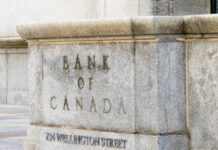Markets
Last week’s corrective bond rally stranded at the start of the fresh trading week. Core bonds ceded ground with rising inflation expectations responsible for the move. Declining real yields (post-BoE deception) no longer counter inflation dynamics. The European 10y inflation swap returned above 2% (2.06%). US Treasuries underperformed German Bunds in a daily respective with a sloppy $56bn 3-yr Note auction being partly responsible. The highest auction yield since early 2020 couldn’t convince investors in a sign that they continue contemplating Fed rate hikes sooner rather than later. The auction stopped 1 bp through the 1:00 PM bid side with a below-average bid-cover. US yields added 3.7 bps (10-yr) to 6.1 bps (5-yr) with very long end of the curve again outperforming (30-yr: -0.5 bps). An avalanche of Fed speakers hit the wires, but without direct market impact. St Louis Fed Bullard penciled in two rate hikes for 2022 and warns that the Fed might have to act sooner to control inflation. Chicago Fed Evans is on the dovish side of the aisle (2023 rate hike) given his seat in team temporary. Philly Fed Harker in more veiled comments also doesn’t seem in a hurry to raise rates. Vice-Chair Clarida, whose term expires in January, broadly sides with the view given by Fed Chair Powell at last week’s press conference. He diverts attention from inflation to the job market but confirms that the maximum employment (and thus lift-off) criteria will be met by end-2022. Regarding central banks (Fed, ECB), it’ll all boil down to December meetings. The German yield curve bear steepened yesterday with yields rising by 0.7 bps (2-yr) to 4.8 bps (30-yr). 10-yr yield spreads vs Germany narrowed by up to 2 bps. US stock markets again managed an all-time closing high, but daily gains were limited to +0.3%, suggesting some more difficulties ahead. Today’s eco calendar contains US NFIB small business optimism, US PPI and German ZEW. They won’t alter ruling dynamics. The US 10-yr Note auction serves as a wildcard.
Support at the front end of the yield curve couldn’t save the dollar. The US 10-yr real yield fell to the lowest level since August (-1.15%) and approaches the -1.20% bottom. This weakness in US real yields is finally showing in USD/JPY with the pair dropping below the lower bound of the sideways trading channel in place since mid-October (113.23). Key resistance in DXY (94.47/74) held and triggered return action, currently sub-94. EUR/USD has 1.16 within reach. EUR/GBP’s rebound stalled just ahead of the 0.86-handle even if BoE governor Bailey deprived the GBP from interest rate support. On top, the EU-UK deadlock on the Northern Irish protocol risks culminating in a trade war between the two. Political risk primes in the short run and hampers sustained GBP strength.
News headlines
In its semi-annual financial stability report the Fed warned that ‘asset prices remain vulnerable to significant declines should investor sentiment deteriorate, progress to contain the virus disappoint or the economic recovery stall’. On specific topics, the Fed also warned that threats of stablecoins are growing, that volatility in meme-stocks could become more frequent, and also dedicated quite some attention to potential spill-over effects from the problems in the China real estate sector. ’Financial stress in China could strain global financial markets through a deterioration in risk sentiment, pose risks to global economic growth, and affect the United States. On the US housing market, the Fed assesses that prices have increased rapidly since its previous report, but it currently sees ‘little indication of highly leveraged real estate investment activity or a deterioration in underwriting standards.
September Japanese (real) wage growth disappointed. Nominal labour cash earnings rose 0.2% Y/, but corrected for price increases, real pay growth declined 0.6% Y/Y, indicating that price rises are also eroding Japanese consumers’ spending power. The labour market department uses another measure for inflation compared the Bank of Japan. This labor market measure rose to 0.9% Y/Y in September. Low real wage growth has become a target for the new government of PM Kishida. A stimulus package of the new government plans to give tax breaks to companies that are raising workers’ compensation. The new government also intends to raise some public sector wages.













